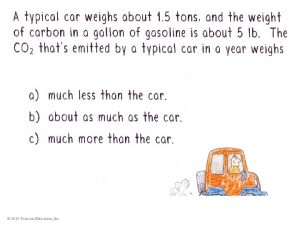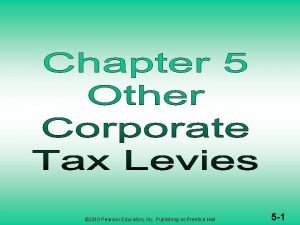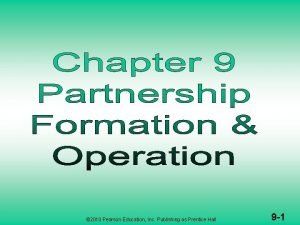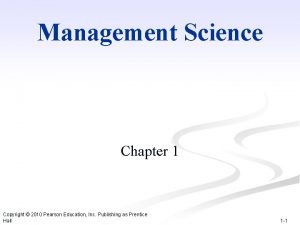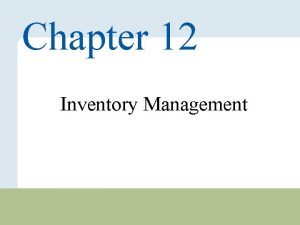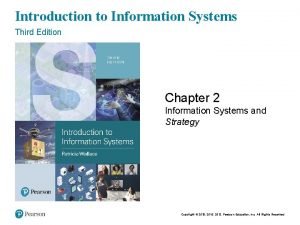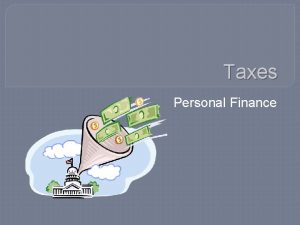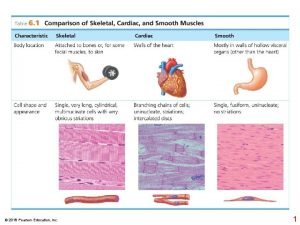Chapter 6 Paying Taxes 2010 Pearson Education Inc


















































- Slides: 50

Chapter 6 Paying Taxes © 2010 Pearson Education, Inc. All rights reserved

Learning Objectives • Describe the basic principles of taxation and the major categories of taxes. • Explain payroll taxes • Describe the purpose and process of filing tax returns • Explain how taxes affect your financial plan © 2010 Pearson Education, Inc. All rights reserved 0 -2

Tax Basics • Tax is money collected by a government from its citizens for the purpose of operating the government • Gross pay is the total amount of money you earn • Take-home pay is the amount of money you get to keep and use • Net Pay is the amount of money you take home © 2010 Pearson Education, Inc. All rights reserved 0 -3

Tax Basics • • • Everyone pays taxes Taxes pay the cost of government The government levies taxes on different things States can have different taxes too There all different types of taxes, such as: – Sales Taxes – Real Estate Taxes – Payroll Taxes © 2010 Pearson Education, Inc. All rights reserved 0 -4

Math for Personal Finance • Ryan’s take-home or net pay was $147. 76 and his gross pay was $160. 00. Assume the FICA withholdings are 7. 65. How much did Ryan pay in FICA from this check? © 2010 Pearson Education, Inc. All rights reserved 0 -5

Math for Personal Finance • Solution: Ryan paid 7. 65 percent of the $60 or $12. 24 in FICA from this check. © 2010 Pearson Education, Inc. All rights reserved 0 -6

Sales Tax • Sales tax is tax on purchases at a store • Some of the price we pay for an item is a tax • The merchant collects this money and sends it to the government • The federal government does not impose a sales tax • Many state governments do impose a sales tax © 2010 Pearson Education, Inc. All rights reserved 0 -7

Real Estate Tax • Governments calculate real estate taxes based on the value of the property • The government sends the property owner a bill for this tax • These taxes are primarily used to fund local schools • They also vary significantly from state to state and county to county. © 2010 Pearson Education, Inc. All rights reserved 0 -8

Payroll Taxes • Payroll Taxes are taxes on your paycheck • Many people pay taxes every time they get paid • These taxes can include federal and state income taxes and social security (or FICA) withholdings. • People who are self employed do not have taxes withheld from their earnings. • See figure 6. 1 for an example of a pay stub © 2010 Pearson Education, Inc. All rights reserved 0 -9

Figure 6. 1 © 2010 Pearson Education, Inc. All rights reserved 0 -10

The Internal Revenue Service • Internal revenue service (IRS) is the government body that carries out the federal tax system • The IRS is a branch of the United States Treasury Department • They enforce the tax laws and collect taxes • Each year in which you earn an income over a certain amount, you need to file a federal tax return with the IRS © 2010 Pearson Education, Inc. All rights reserved 0 -11

The Internal Revenue Service • Tax returns report to the IRS all the information relative to your income taxes • A tax return consists of a form called 1040 or 1040 EZ (see Figure 6. 2 a &b) • On this form you need to include how much income you earned and how much you paid to the IRS • You will either receive a refund or pay the difference to the government if you owe money © 2010 Pearson Education, Inc. All rights reserved 0 -12

Figure 6. 2 a © 2010 Pearson Education, Inc. All rights reserved 0 -13

Figure 6. 2 b © 2010 Pearson Education, Inc. All rights reserved 0 -14

The Internal Revenue Service • Taxes are figured based on your earnings from January to December • When the year is over, you have until April 15 th to file your return • Many careers involve helping people take advantage of tax laws to pay the lowest possible tax • Attorneys and accountants make good incomes by helping people with tax issues © 2010 Pearson Education, Inc. All rights reserved 0 -15

Check Your Financial IQ • What is the major purpose of taxes? © 2010 Pearson Education, Inc. All rights reserved 0 -16

Check Your Financial IQ • Taxes pay the cost of government © 2010 Pearson Education, Inc. All rights reserved 0 -17

Understanding Payroll Taxes • Personal Income Taxes are federal income taxes and state income taxes (the states that have them) • Social Security provides payments to eligible retirees and disabled people • Medicare provides health care coverage to mostly older Americans and some younger disabled people © 2010 Pearson Education, Inc. All rights reserved • Payroll taxes include: – Social Security and Medicare taxes – Personal income taxes (state and federal) 0 -18

Social Security and Medicare • For most Americans, earned income is subject to FICA taxes • FICA taxes are withheld from your paychecks and sent to the government • These withholdings fund Social Security and Medicare • For both Social Security and Medicare, your employer matches your contributions and sends the total amount to the government © 2010 Pearson Education, Inc. All rights reserved 0 -19

Social Security and Medicare • Your portion of the Social security tax is equal to 6. 20 percent of your salary—up to a specific income level • This amount is linked to inflation and increases slightly every year • There is no cap on the amount of earnings subject to the Medicare tax © 2010 Pearson Education, Inc. All rights reserved 0 -20

Math for Personal Finance • Brogan’s grandfather made $112, 000 in 2007, and the Social Security cap in 2007 was $97, 5000. • How much Social Security was withheld from his pay and how much Medicare was withheld from his pay? © 2010 Pearson Education, Inc. All rights reserved 0 -21

Math for Personal Finance • Solution: Brogran’s grandfather had 6. 2% withheld from his pay for the first $97, 500 he made during 2007 for a total of $6, 045 or (. 062 x $97, 500). However, Medicare was withheld on the entire amount so Medicare withholdings were $112, 000 x. 0145 = $1, 624. © 2010 Pearson Education, Inc. All rights reserved 0 -22

Personal Income Taxes • Personal income taxes is the income reported on your tax return • Many people use a tax professional or tax preparation software for returns. • These programs guide you through preparing your tax returns and include all the necessary forms • Refer to Figure 6. 3 for the IRS table of individual tax rates © 2010 Pearson Education, Inc. All rights reserved 0 -23

Figure 6. 3 © 2010 Pearson Education, Inc. All rights reserved 0 -24

Other Income Taxes • Many people pay a state income tax, depending on where they live • Some cities also collect income taxes • Take a look at figure 6. 4 for a listing of states with the highest and lowest tax rates © 2010 Pearson Education, Inc. All rights reserved 0 -25

Figure 6. 4 © 2010 Pearson Education, Inc. All rights reserved 0 -26

Check Your Financial IQ • What are the payroll taxes? © 2010 Pearson Education, Inc. All rights reserved 0 -27

Check Your Financial IQ • Federal and state income taxes, Social Security, and Medicare payroll taxes © 2010 Pearson Education, Inc. All rights reserved 0 -28

Filing Taxes • A tax return form allows you to record several different categories of information, including: – Filing Status – Exemptions – Gross Income – Adjusted gross income – Tax and credits © 2010 Pearson Education, Inc. All rights reserved 0 -29

Filing Status • Taxpayers need to specify a filing status when they submit their income tax return • They must choose one of the following options: – Single – Married filing jointly – Married filing separately – Head of household – Qualifying widow(er) with dependent child © 2010 Pearson Education, Inc. All rights reserved 0 -30

Filing Status • Tax rules and rates differ depending on which status you choose • Until the age of 18, most of you will be considered dependents by the IRS © 2010 Pearson Education, Inc. All rights reserved 0 -31

Gross Income or Total Income • Gross income is the total income consisting of the total amount of a person’s income from (almost) any source • The first step in calculating the federal tax you owe is to determine your gross income • Your employer will send you a W-2 form that details how much money you made • See Figure 6. 5 for a sample W-2 form © 2010 Pearson Education, Inc. All rights reserved 0 -32

Figure 6. 5 © 2010 Pearson Education, Inc. All rights reserved 0 -33

Gross Income or Total Income • Capital gains occur when you sell an asset for more than what you paid for it • Other forms of income include interest income, dividend income, and capital gains • Gross income also includes income from tips, rental properties, and business income. • Some types of income are not included in gross income and therefore are not taxes, such as: – Insurance reimbursements – Child support payments – Veteran’s welfare benefits © 2010 Pearson Education, Inc. All rights reserved 0 -34

Adjusted Gross Income • Adjusted gross income is figured by taking the total income and subtracting certain allowable amounts • The next step in filing a tax return is to figure your adjusted gross income, or AGI. • The allowable amounts include : © 2010 Pearson Education, Inc. All rights reserved – contributions to certain retirement accounts – alimony payments – interest paid on student loans 0 -35

Math for Personal Finance • Last year Colt’s salary was $32, 000 but he also received $1, 200 in dividend income and lost $400 on the sale of one stock and gained $650 on the sale of another stock. • What was Colt’s gross income? © 2010 Pearson Education, Inc. All rights reserved 0 -36

Math for Personal Finance • Solution: Colt’s gross income was $32, 000 + $1, 200 - $400 +$650 = $33, 450 © 2010 Pearson Education, Inc. All rights reserved 0 -37

Deductions and Exemptions • Standard deduction is a fixed amount all people are allowed to deduct from their AGI to reduce their tax liability • Itemized deductions are specific expenses that, under tax law, can be deducted from income to reduce the amount of income subject to income tax © 2010 Pearson Education, Inc. All rights reserved • You may be able to claim various deductions and exemptions that will reduce the amount of your AGI that is subject to your income taxes. • These deductions include: – Standard deduction – Itemized deduction 0 -38

Deductions and Exemptions • Congress has approved certain items as tax deductible in order to encourage certain behaviors • For example, Congress encourages home ownership • Homeowners can deduct the interest paid on a mortgage loan and the real estate taxes they pay © 2010 Pearson Education, Inc. All rights reserved 0 -39

Refund or Payment • Accurate completion of your tax return will show you if you need to pay additional income taxes or if you will receive a refund • In most cases, you will not receive a refund unless you pay taxes during the year © 2010 Pearson Education, Inc. All rights reserved 0 -40

Check Your Financial IQ • When does a person file his or her taxes? © 2010 Pearson Education, Inc. All rights reserved 0 -41

Check Your Financial IQ • A person fills out a tax return by April 15 of each year © 2010 Pearson Education, Inc. All rights reserved 0 -42

Taxes and Your Financial Plan • People want to lower their tax liability to the lowest possible level for their income • They will keep more of their own money rather than paying it to the government in taxes • Tax planning influences both your short-term and long-term future • Consider the tax implications of your financial life at all stages © 2010 Pearson Education, Inc. All rights reserved 0 -43

Check Your Financial IQ • Why are taxes an important part of your financial plan? © 2010 Pearson Education, Inc. All rights reserved 0 -44

Check Your Financial IQ • You must consider the tax consequences of all your financial decisions because the tax impact may make one course of action better than another © 2010 Pearson Education, Inc. All rights reserved 0 -45

Summary • Taxes are monies the government collects from citizens for the purpose of operation the government • The government collects taxes in a variety of ways and forms: – Sales taxes – Real estate taxes – Payroll taxes • The IRS is the governmental body that carries out the federal tax system © 2010 Pearson Education, Inc. All rights reserved 0 -46

Summary • Payroll taxes include personal income taxes (state and federal) and Social Security and Medicare taxes • Social Security and Medicare taxes are also known as FICA • Filing taxes involves reporting your earnings for the year on a tax return. • This is sent to the IRS and to any appropriate state or local tax collection agency © 2010 Pearson Education, Inc. All rights reserved 0 -47

Summary • Tax planning is another important step in your financial plan • Taking full advantage of the ways to reduce your taxable income takes planning © 2010 Pearson Education, Inc. All rights reserved 0 -48

Key Terms and Vocabulary • • • Adjusted gross income Capital gain Gross income Gross pay Internal Revenue Service (IRS) • Itemized deduction • Medicare © 2010 Pearson Education, Inc. All rights reserved • • • Net pay Payroll tax Personal income tax Sales tax Social security Standard deduction Take-home pay Tax return 0 -49

Websites • www. irs. gov • www. taxadmin. org/fta/rate/ind_inc. html © 2010 Pearson Education, Inc. All rights reserved 0 -50
 2010 pearson education inc
2010 pearson education inc Copyright 2010 pearson education inc
Copyright 2010 pearson education inc 2010 pearson education inc
2010 pearson education inc 2010 pearson education inc answers
2010 pearson education inc answers 2010 pearson education inc answers
2010 pearson education inc answers 2010 pearson education inc answers
2010 pearson education inc answers 2010 pearson education inc
2010 pearson education inc 2010 pearson education inc
2010 pearson education inc Copyright 2010 pearson education inc
Copyright 2010 pearson education inc 2010 pearson education inc
2010 pearson education inc Copyright 2010 pearson education inc
Copyright 2010 pearson education inc 2010 pearson education inc answers
2010 pearson education inc answers 2010 pearson education inc answers
2010 pearson education inc answers 2010 pearson education inc
2010 pearson education inc Pearson education inc. publishing as prentice hall
Pearson education inc. publishing as prentice hall 2010 pearson education inc
2010 pearson education inc 2010 pearson education inc answers
2010 pearson education inc answers 2010 pearson education inc
2010 pearson education inc 2010 pearson education inc
2010 pearson education inc 2010 pearson education inc answers
2010 pearson education inc answers 2010 pearson education inc
2010 pearson education inc 2010 pearson education inc
2010 pearson education inc Copyright 2010 pearson education inc
Copyright 2010 pearson education inc Copyright 2010 pearson education inc
Copyright 2010 pearson education inc Copyright 2010 pearson education inc
Copyright 2010 pearson education inc 2010 pearson education inc
2010 pearson education inc Copyright 2010 pearson education inc
Copyright 2010 pearson education inc Copyright 2010 pearson education inc
Copyright 2010 pearson education inc Copyright 2010 pearson education inc
Copyright 2010 pearson education inc Pearson education inc. all rights reserved
Pearson education inc. all rights reserved 2010 pearson education inc answers
2010 pearson education inc answers Income statement example pearson
Income statement example pearson 2010 pearson education inc answers
2010 pearson education inc answers Pearson education inc. publishing as prentice hall
Pearson education inc. publishing as prentice hall Pearson education inc publishing as pearson prentice hall
Pearson education inc publishing as pearson prentice hall 2011 pearson education inc
2011 pearson education inc Pearson education inc publishing as pearson prentice hall
Pearson education inc publishing as pearson prentice hall 2012 pearson education inc
2012 pearson education inc 2008 pearson prentice hall inc
2008 pearson prentice hall inc Paycheck
Paycheck 2018 pearson education inc
2018 pearson education inc 2017 pearson education ltd
2017 pearson education ltd Copyright pearson education inc
Copyright pearson education inc 2017 pearson education inc
2017 pearson education inc 2017 pearson education inc
2017 pearson education inc 2017 pearson education inc
2017 pearson education inc 2017 pearson education inc
2017 pearson education inc 2016 pearson education inc
2016 pearson education inc 2015 pearson education inc
2015 pearson education inc 2014 pearson education inc
2014 pearson education inc 2013 pearson education inc
2013 pearson education inc



